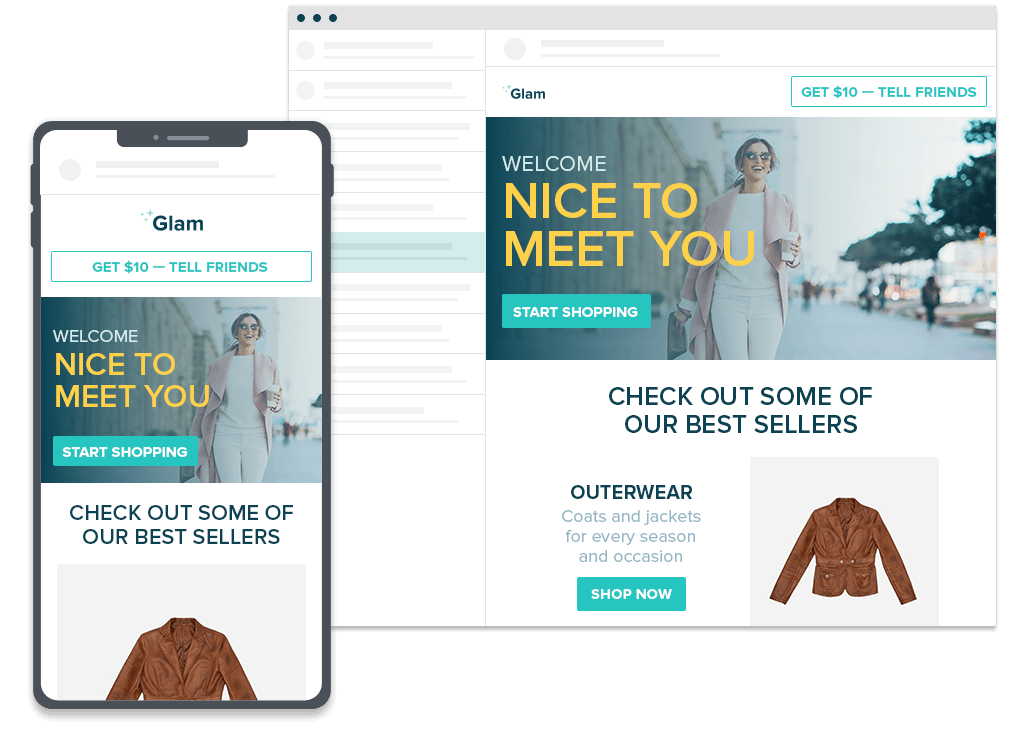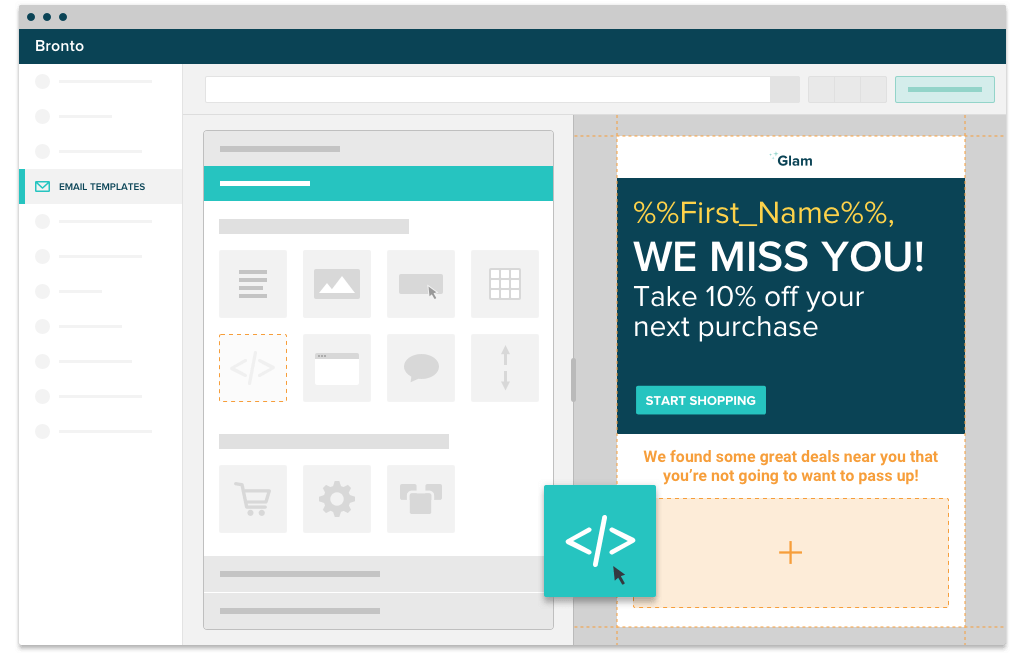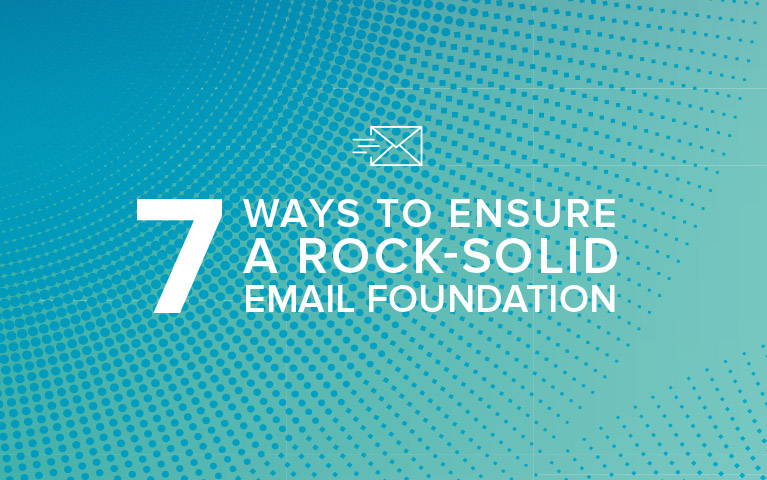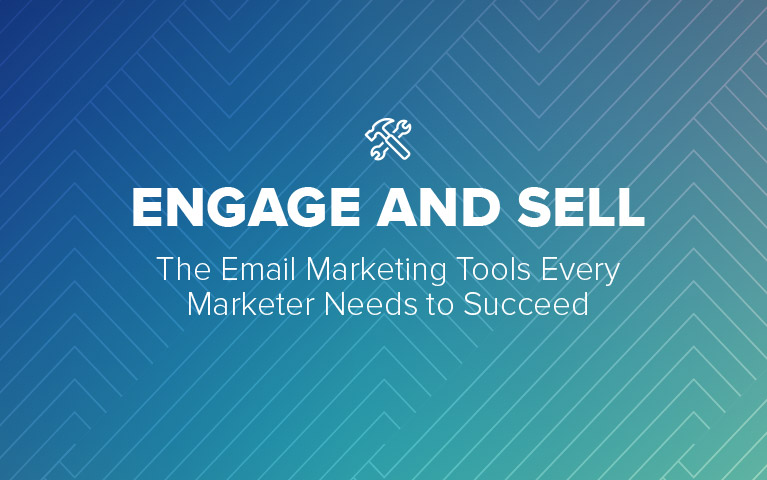Email Templates
EMAIL TEMPLATES
OUR TEMPLATES, OR YOURS
EASY TO CREATE MESSAGES
Email templates are the framework for your messages. The Bronto Message Editor lets
you add content and create beautiful emails without the need for a developer or
designer. Don’t want to build your own email templates? No problem. Bronto comes with
professionally designed, responsive email templates so you can get up and running as
fast as possible.

TEMPLATES
Create beautiful, personalized, and responsive emails in a variety of ways. Use one of our prebuilt templates as is or as a starting point and customize it. Or design your own template from scratch. Then, bring your emails to life with our drag-and-drop tools that make it fast and easy to add content, images and video, links, and calls to action – no developers required.
MOBILE OPTIMIZED
Whether you build a template from scratch or use one of our prebuilt templates, every email is responsive, adapting the layout and style of the message to any screen size.

“Bronto’s just a really user-friendly platform that offers a
lot of opportunity, and because we’re a global business,
it allows us to manage the global platform and campaign
seamlessly. We saw instant success in terms of revenue
generation. It’s so simple, yet so effective.”

EMU Australia, Sue Meehan, Global Director of
Brand and Ecommerce

DYNAMIC CONTENT
Make your content more relevant by including details specific to each recipient. Whether it’s first name, location, items purchased, product information or any other relevant detail, easily add that information to your messages with dynamic content blocks. You can even personalize emails with dynamic content that are part of automated messages.
Ready to get started?































